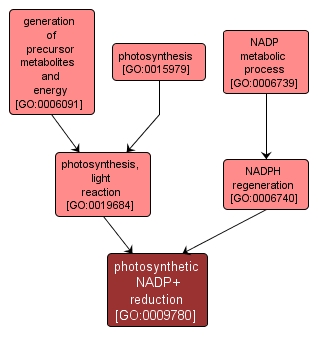| Desc: |
The process by which NADP+ is reduced to NADPH. The light reactions of photosynthesis use energy from photons to generate high-energy electrons. These electrons are used directly to reduce NADP+ to NADPH. NADPH is a relatively stable molecule and can pass on its hydrogen atom to other molecules in chemical reactions. |














